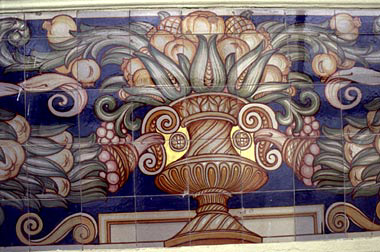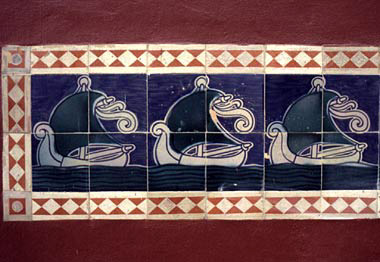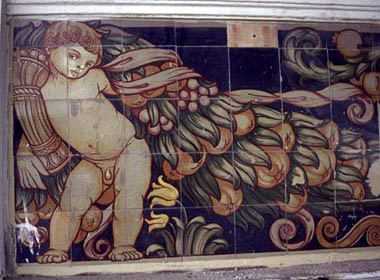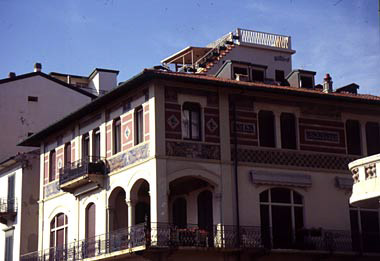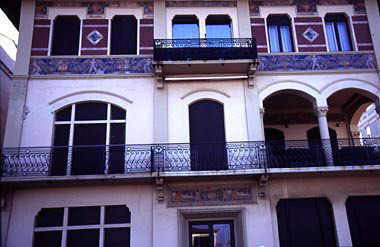Villino Amor omnia vincit

Information
District:
Versilia
Building dating:
1907, 1909
District/Location:
The villa is a private property and cannot be visited inside.

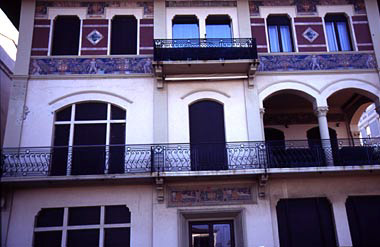
The residence appears to be a "document-building"; on the façade one can read the name of the purchaser, Giovanni Brunetti, the year of construction, 1909 and the name of the residence, not to mention the name of the designers.
The building, which spans three floors, has articulated façades which are characterised by different conformations and by the use of different materials such as ceramics for decoration and wrought iron for the balustrade railings.
The small villa exhibits rich decoration on the crowning attic fascia and on the skirt roof frieze, with small cupids and floral festoon, alternated with amphorae.
The classically themed tiles are coupled with other stylised sailing boat motifs and geometrically finished borders, in accordance with an iconographic typology which is typical of Chini's work: themes appertaining to classical tradition tend to be likened to the new style. The Renaissance figures are re-interpreted according to Modernist taste and are translated into a two-dimensional pictorial language.
The villa is a private property and cannot be visited inside.
The building, which spans three floors, has articulated façades which are characterised by different conformations and by the use of different materials such as ceramics for decoration and wrought iron for the balustrade railings.
The small villa exhibits rich decoration on the crowning attic fascia and on the skirt roof frieze, with small cupids and floral festoon, alternated with amphorae.
The classically themed tiles are coupled with other stylised sailing boat motifs and geometrically finished borders, in accordance with an iconographic typology which is typical of Chini's work: themes appertaining to classical tradition tend to be likened to the new style. The Renaissance figures are re-interpreted according to Modernist taste and are translated into a two-dimensional pictorial language.
The villa is a private property and cannot be visited inside.
Viale Carducci 59, Viareggio
On viale Carducci the small villa Amor omnia vincit, one of the first Modernist elegant residences on the seafront, bears witness to the first ceramic decorations in the town produced by the Chini kilns at Borgo San Lorenzo. In Viareggio, more than in any other place, Galileo Chini has left precious signs which testify a long and eclectic artistic career. In particular, along the seafront boulevards, the rich ceramic decoration of the buildings guides us through a sort of open air museum tour in which the harmony of the architectonic structure of the façades and decoration enable the reconstruction of the history, typology and iconographic programme of these artistic artefacts.
(source: Alessandra Belluomini Pucci - Centro Studi Cultura Eclettica Liberty e Déco)
(source: Alessandra Belluomini Pucci - Centro Studi Cultura Eclettica Liberty e Déco)
- BELLUOMINI PUCCI A., Un museo all'aperto: la ceramica di Galileo Chini nell'esposizione permanente della città di Viareggio, in G. Borella, A. Serafini (a cura di), La costruzione della Versilia, Maschietto&Musolino, Pontedera 2000.
- GIUSTI MARIA ADRIANA, Viareggio 1828-1938. Villeggiatura, Moda, Architettura, Idea Books, Firenze 1989.
Scopri altre attrazioni vicino a Villino Amor omnia vincit
See allYou may also like..
See allFind more
0








